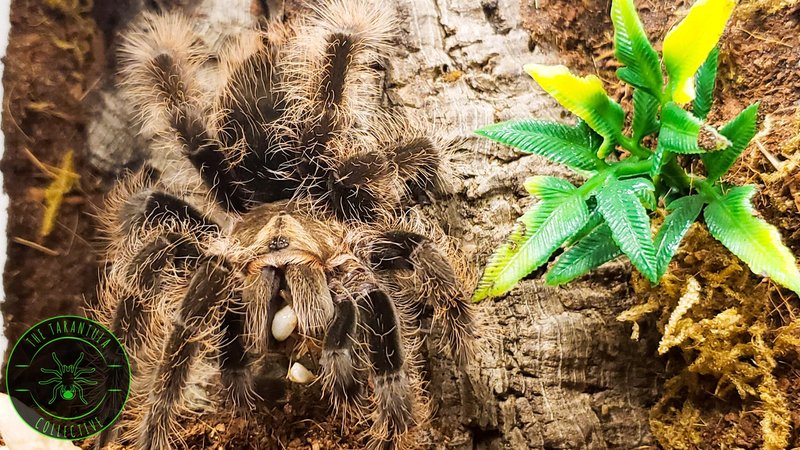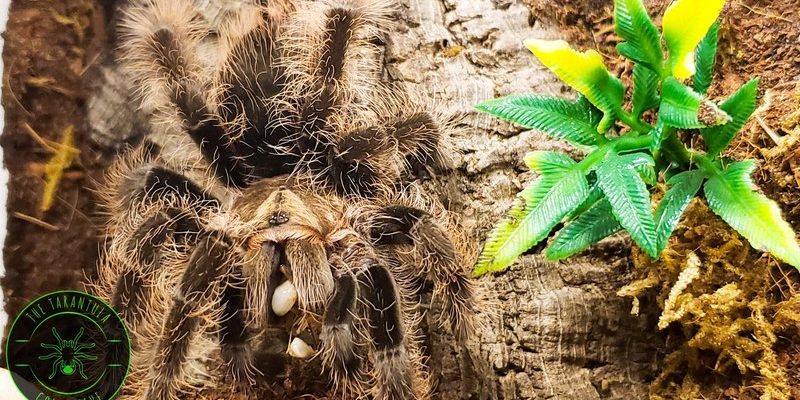
Taking care of a Curly Hair Tarantula is similar to tending to a small, quiet garden. They’ve got their own set of needs regarding habitat, feeding, and care, which might seem daunting at first. But once you get the hang of it, it’s pretty rewarding. So, whether you’re a curious beginner or you just want to spice up your collection of exotic pets, let’s dive into the world of these delightful eight-legged friends!
Understanding the Curly Hair Tarantula
Curly Hair Tarantulas, or *Brachypelma albopilosum*, are native to the lush rainforests of Central America, particularly Nicaragua and Honduras. Their name comes from the distinct curly hairs on their bodies, which not only makes them look unique but also serves a purpose. These hairs can help them sense their environment. Imagine having a coat that not only looks good but helps you navigate your world!
In terms of personality, these tarantulas are generally calm and easygoing, especially when compared to other tarantula species. They often prefer to stay hidden, making them less likely to pose a threat. Sure, they can be shy, but with the right care, you can build a trusting relationship with your Curly Hair Tarantula.
Setting Up the Perfect Habitat
Creating a suitable habitat for your Curly Hair Tarantula is crucial. Think of it like setting up a cozy home. Here’s what you need to consider:
- Enclosure Size: A glass terrarium or plastic enclosure of at least 20 gallons is ideal. It gives your spider enough room to roam and explore.
- Substrate: Use a substrate like coconut coir or peat moss. Aim for about 3-4 inches deep, allowing your tarantula to burrow if it wants. They love to dig, just like kids love to build sandcastles!
- Temperature & Humidity: Keep the habitat temperature between 75°F and 85°F, and maintain humidity levels around 60-70%. A simple thermometer and hygrometer can help you monitor these conditions. Think of this as keeping the air just right, like a cozy blanket.
- Decor and Hiding Spots: Include items like cork bark or small caves for hiding. It’s essential for their safety and comfort. Imagine creating a little secret hideout where they can feel secure!
Lighting and Environment
Lighting isn’t overly complicated. A natural light cycle works best, so place the enclosure somewhere it can receive indirect sunlight. This mimics their natural habitat and keeps them active and healthy without overheating them.
Feeding Your Curly Hair Tarantula
Feeding your Curly Hair Tarantula isn’t like feeding a dog or cat. These creatures are carnivorous and mainly enjoy crickets, roaches, and mealworms. Here’s how to make mealtime easy!
- Live Food: Always offer live food, as they need the stimulation that comes with hunting. It’s like a little game of tag for them!
- Frequency: As juveniles, feed them every 2-3 days. Adults can be fed once a week. Adjust based on your tarantula’s appetite—some can be real gourmets!
- Water: Provide a shallow water dish and refresh it daily. They don’t drink like other pets, so make sure it’s easy for them to access without drowning.
It’s essential to avoid overfeeding, as tarantulas can become obese, which isn’t healthy. Just like us, a balanced diet keeps them healthy and active.
Signs of a Healthy Tarantula
Keep an eye out for signs of health! A healthy Curly Hair Tarantula will have bright coloration, active movements, and an appetite. If your spider is lethargic or refuses to eat, it may be time to check their habitat conditions or consult a vet.
Handling Your Curly Hair Tarantula
Now, this is where some might hesitate—handling your Curly Hair Tarantula. While they can be handled, it should be done with caution and respect. Here are some tips:
- Gentle Approach: When you’re ready, gently coax the tarantula onto your hand. Avoid grabbing them; think of it as inviting them for a stroll.
- Short Sessions: Keep handling sessions brief, around 5-10 minutes. You don’t want to overwhelm them.
- Watch for Stress Signs: If your tarantula starts to seem restless or tries to climb away, it’s best to let them go back to their home. Remember, they’re not dogs—they prefer their space!
Some owners forgo handling altogether, and that’s perfectly fine! Just observing their behaviors can be equally rewarding.
Common Health Issues and Troubleshooting
Just like any pet, keeping an eye on your Curly Hair Tarantula’s health matters. Here are a few common issues to watch for:
- Molt Problems: Tarantulas molt to grow, but sometimes they struggle. If your tarantula hasn’t changed for over a month, it might need assistance. A careful soak in shallow water can help loosen any stuck skin.
- Respiratory Issues: Signs like wheezing or lethargy could indicate a respiratory problem. Ensure proper ventilation in their enclosure and consider consulting a vet if issues persist.
- Parasitic Infections: If you notice unusual behavior or external marks, it might be time for a check-up. Regular habitat cleaning helps prevent these types of infections.
Staying proactive about their health can ensure your Curly Hair Tarantula lives a long, happy life.
Keeping a Curly Hair Tarantula as a pet can be a fantastic journey for anyone willing to embrace something a little different. They offer a unique blend of beauty and intrigue, while their care requirements are manageable, even for beginners.
Remember, they might not snuggle like a cat or bounce around like a dog, but observing their behaviors and watching them thrive can be incredibly rewarding. So, if you’re ready to take the plunge and welcome a Curly Hair Tarantula into your home, you’ll gain a silent yet fascinating companion who brings a slice of nature right to your living room. Enjoy every moment with your new eight-legged friend!

